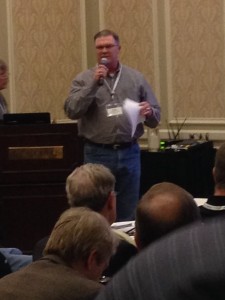 Your Farm & Ranch Investment Property and Section 1031 Tax Deferred Exchanges
Your Farm & Ranch Investment Property and Section 1031 Tax Deferred Exchanges
by Casey Berley, ALC, Hortenstine Ranch Company
One of the most lucrative considerations available to help investors sell appreciated investment real estate including farm and ranch property is the Section 1031 Tax Deferred Exchange. This is a beneficial option in many cases because it may help the investor to accomplish two potentially positive outcomes:
- Deferral of capital gain taxes that would usually be due upon sale
- Preservation of equity held in the property
In its most basic form, the purpose of the 1031 tax deferred exchange is to enable the investor to continue an investment without adverse tax consequences. The basic idea of the exchange is that income tax may be deferred or may not apply as long as the investment remains intact in the form of real estate. This concept may allow the investor to exchange real estate for other real estate with little or no recognition of gain. The result is that all or a substantial part of the investor’s equity may be available as cash to be used toward the purchase of the replacement (“new”) property.
Whether the sale of the relinquished property and purchase of the replacement property is eligible for a tax deferred exchange is determined by the nature of the properties involved, not the status of the taxpayer. Other rules and time limits apply. See the table below for a basic summation of some of the potential advantages and disadvantages of a Section 1031 Tax Deferred Exchange:
Potential Advantages:
- Capital gains tax may be deferred on the sale of the property
- Heirs to the investor may receive a stepped-up basis equal to the fair market value and tax on accumulated gains may be forgiven
- Investment property that has been held for a long time and has greatly appreciated in value may be freed up for exchange into other real estate
- Money that would have otherwise gone to pay taxes may be available for reinvestment
Potential Disadvantages:
- Future capital gains tax rates may be higher or the taxpayer could be in a higher tax bracket when the gain is ultimately recognized
- Losses cannot be recognized at the time of the transaction – recognition of losses is also deferred in the exchange
- The investor may have tax consequences if the net proceeds from the relinquished property are not reinvested in real estate
- Failure of the investor to strictly adhere to rules and time limits for the exchange may cause the exchange to fail and be subject to taxation
Simply put, you may be able to sell your appreciated farm/ranch investment property and use the proceeds from the sale to purchase another investment property or properties while deferring your otherwise taxable capital gain from your original property. This may result in more cash available for investment into your replacement (“new”) property. See simple example below:
Simple Example:
An investor exchanges a tract of farm property valued at $900,000 with no debt in Oklahoma for a $1,300,000 farm in Texas for a tax savings of over $100,000 that can be used to purchase substantially more replacement property.
| Sale | Exchange | |
| Fair Market Value of Farm | $900,000 | $900,000 |
| Basis | $600,000 | $600,000 |
| Gain Recognized | $300,000 | -0- |
| Tax | $105,000 | -0- |
| Tax Deferral Savings | -0- | $105,000 |
| Cash Available for Reinvestment | $795,000 | $900,000 |
Before making real estate investment decisions, please seek the guidance of a qualified tax professional, attorney, and/or qualified intermediary for Section 1031 Tax Deferred Exchanges.
* Neither the author of this article, nor Hortenstine Ranch Company, LLC are experts or authorities in the area of Section 1031 Tax Deferred Exchanges. The intent of this article to is to make the reader aware of a potential tool or option to consider before they invest in real property. There are several rules, regulations, and time lines that apply to Section 1031 Tax Deferred Exchanges and we firmly suggest that the investor or potential investor seek the guidance of a qualified tax professional, attorney, and/or qualified intermediary for Section 1031 Tax Deferred Exchanges.


